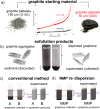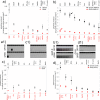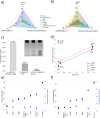Direct Evidence of the Exfoliation Efficiency and Graphene Dispersibility of Green Solvents toward Sustainable Graphene Production
- PMID: 36643002
- PMCID: PMC9832534
- DOI: 10.1021/acssuschemeng.2c03594
Direct Evidence of the Exfoliation Efficiency and Graphene Dispersibility of Green Solvents toward Sustainable Graphene Production
Abstract
Achieving a sustainable production of pristine high-quality graphene and other layered materials at a low cost is one of the bottlenecks that needs to be overcome for reaching 2D material applications at a large scale. Liquid phase exfoliation in conjunction with N-methyl-2-pyrrolidone (NMP) is recognized as the most efficient method for both the exfoliation and dispersion of graphene. Unfortunately, NMP is neither sustainable nor suitable for up-scaling production due to its adverse impact on the environment. Here, we show the real potential of green solvents by revealing the independent contributions of their exfoliation efficiency and graphene dispersibility to the graphene yield. By experimentally separating these two factors, we demonstrate that the exfoliation efficiency of a given solvent is independent of its dispersibility. Our studies revealed that isopropanol can be used to exfoliate graphite as efficiently as NMP. Our finding is corroborated by the matching ratio between the polar and dispersive energies of graphite and that of the solvent surface tension. This direct evidence of exfoliation efficiency and dispersibility of solvents paves the way to developing a deeper understanding of the real potential of sustainable graphene manufacturing at a large scale.
© 2022 The Authors. Published by American Chemical Society.
Conflict of interest statement
The authors declare no competing financial interest.
Figures




References
-
- Baker J. A.; Worsley C.; Lee H. K. H.; Clark R. N.; Tsoi W. C.; Williams G.; Worsley D. A.; Gethin D. T.; Watson T. M. Development of Graphene Nano-Platelet Ink for High Voltage Flexible Dye Sensitized Solar Cells with Cobalt Complex Electrolytes. Adv. Eng. Mater. 2017, 19, 1600652.10.1002/adem.201600652. - DOI
-
- Mori F.; Kubouchi M.; Arao Y. Effect of Graphite Structures on the Productivity and Quality of Few-Layer Graphene in Liquid-Phase Exfoliation. J. Mater. Sci. 2018, 53, 12807.10.1007/s10853-018-2538-3. - DOI
LinkOut - more resources
Full Text Sources
